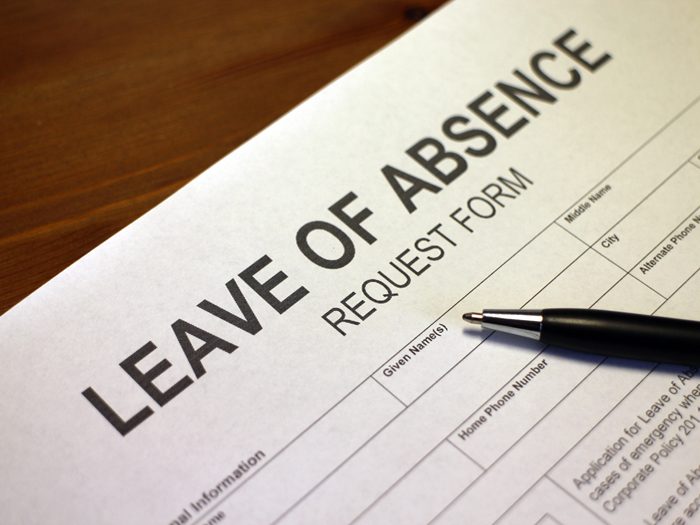A Dizzying Task: Keeping Up With the Sweeping Changes in Paid Leave

Paid leave is a particularly thorny subject to tackle. New laws are passed all the time. Rules vary widely by state, city and municipality. In fact, 32 states proposed paid family and medical leave legislation in 2019 alone.
Meanwhile, workers are expecting more and more generosity from employees — especially after seeing companies like Netflix offer one full year of paid parental leave. Saying it’s hard for employers to keep up with the trends is a gross understatement.
“This is an area of the law that’s changing by the week, sometimes by the day. It’s an area we think will continue to see a lot of movement and growth,” said Ellen McCann, assistant vice president & special counsel at Unum Group.
McCann shed some light on the ever-evolving industry during a July webinar by the Disability Management Employer Coalition and Unum. She explained that changes to paid leave laws have been swift and dramatic. Since 2018:
- Eight states (Washington, Maryland, Rhode Island, New Jersey, Michigan, New Mexico, Nevada and Maine) passed employer-mandated paid leave laws.
- Four states (Washington, Massachusetts, Connecticut and Oregon) and Washington D.C. passed Family and Medical Leave Insurance Programs.
- All states with Family and Medical Leave Insurance Programs issued new contribution and benefit rates.
- When New Jersey passed its paid leave laws, they preempted 13 municipal leave laws from towns in the state.
Meanwhile, cities and counties have laws of their own.
In California, eight cities (including San Francisco and Los Angeles) passed paid sick leave. Cook County, Illinois (where Chicago is located) passed paid sick leave laws, but several cities passed laws excluding themselves from the regulations.
Is your head spinning yet? If not, consider this: Each state follows their own plan design.
“No two states are exactly the same. They might have different eligibility criteria, different percentage of income as a replacement benefit, different lengths of time for leave. They might cover different leave reasons. It really is getting complicated for employers who are in multiple states,” said McCann.
The Only Constant Is Change
It’s impossible to explain all the paid leave changes in a single article, but here are some highlights:
- Washington and Rhode Island enacted laws in 2018 that provide up to 40 hours of paid leave for an employee or family member’s medical care, safe leave or because their place of business or child care closed due to a public health emergency. New Jersey’s law, enacted in October 2018, provides the same level of paid leave but extends it to school-related meetings or events, too.
- Maryland provides up to 40 hours for an employee or family member’s illness, preventative care, safe leave or maternity/paternity leave.
- Maine and Nevada recently passed the first laws in the country that mandate that an employer provide 40 hours of paid leave for any reason.
McCann said paid leave regulations are trending toward the Maine and Nevada models.
“We do think that’s the trend and that’s where this is going to go. The range of time any employee can use is between 24 and 56 hours,” she said. “This is the kind of leave law where we’ve seen the most growth.”
Can a Federal Solution Clear Things Up?
There’s a chance federal laws pass and give everyone much more clarity on the rules.
President Donald Trump talked about the importance of a federal paid leave program in his State of the Union speech, and both Democrats and Republicans have proposals on the issue.
Read More: This Is Why Employers Are Rethinking Their Paid Leave Programs
One that generated headlines back in March was Sens. Marco Rubio and Mitt Romney’s plan that would allow people to borrow up to three months of benefits from their Social Security account following the birth or adoption of a child to offset the costs of taking time off of work.
“A federal solution would be great for a lot of multi-state employers. You’d feel like you have a better grasp of it and it would provide some uniformity, especially if they preempted those state and municipal laws,” said Angel Bennett, director of the leave management center at Unum. Bennett also presented during the webinar.
Taking Action
If you don’t have the internal firepower to keep up with all the changing regulations around paid leave, don’t worry, you have options.
Outsource your leave administration. If you’re multi-state, have a significant number of employees or have limited HR resources, outsourcing plan administration might be right for you. It’ll give you access to experts who can stay ahead of the changing legislation for you and make sure you have consistent administration processes.
Consult with new tech tools. New technology solutions are aiming to provide some clarity on the issue. They can help managers navigate the paid leave laws and keep company policies up-to-date.
Seek consultation and information. Get experts to help you design your paid leave plans. They’ll have resources for best practices and benchmarking and can help you review your benefits packages. When in doubt, don’t go it alone. &










